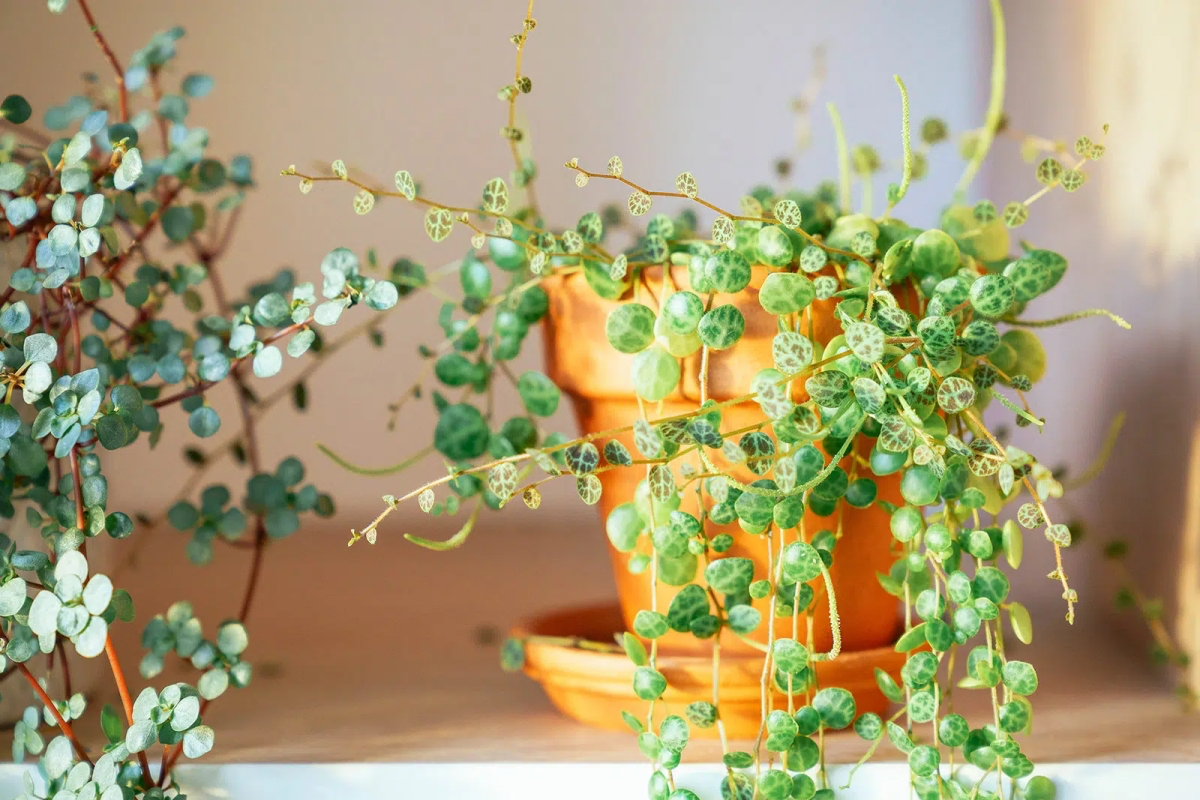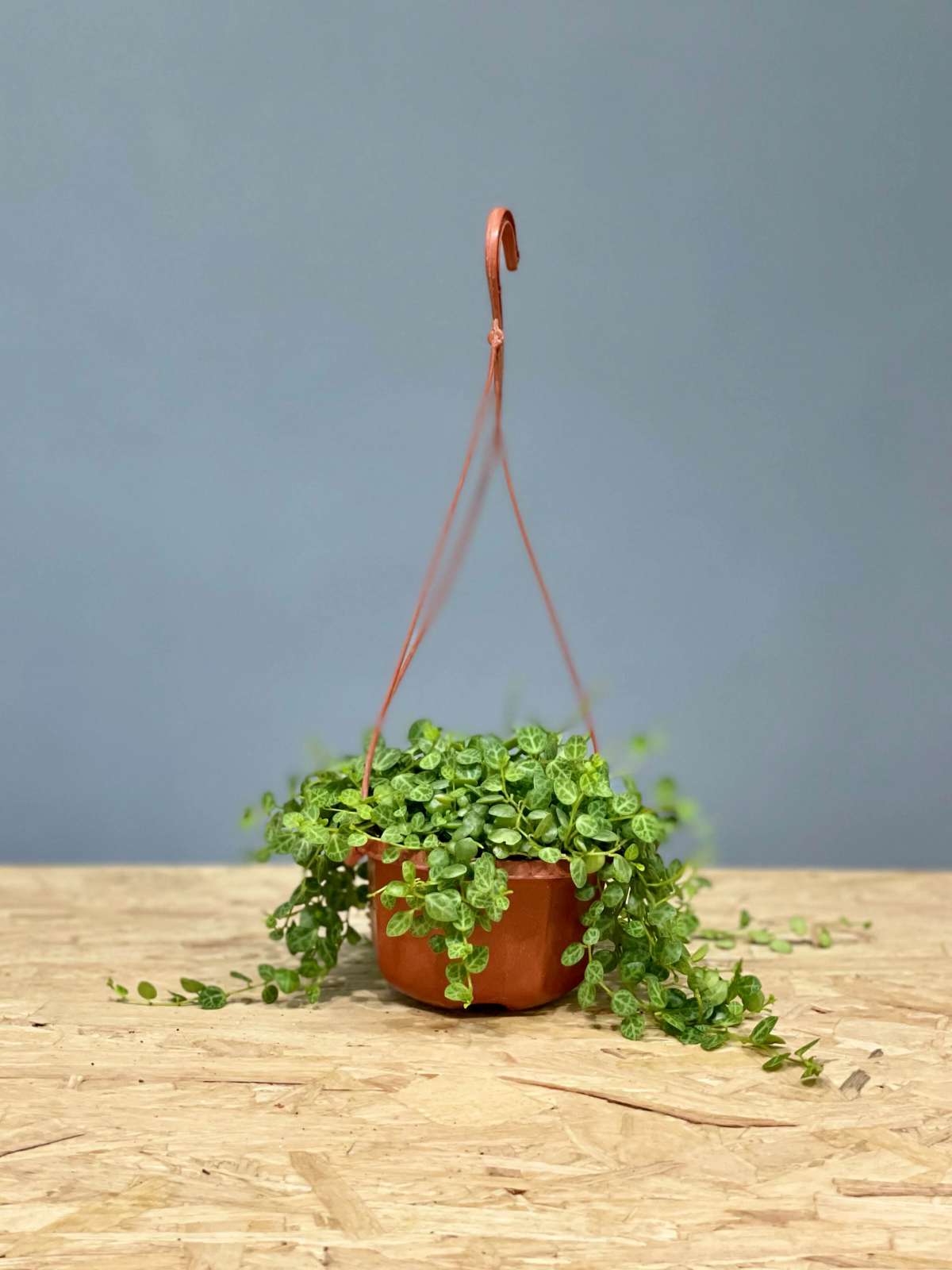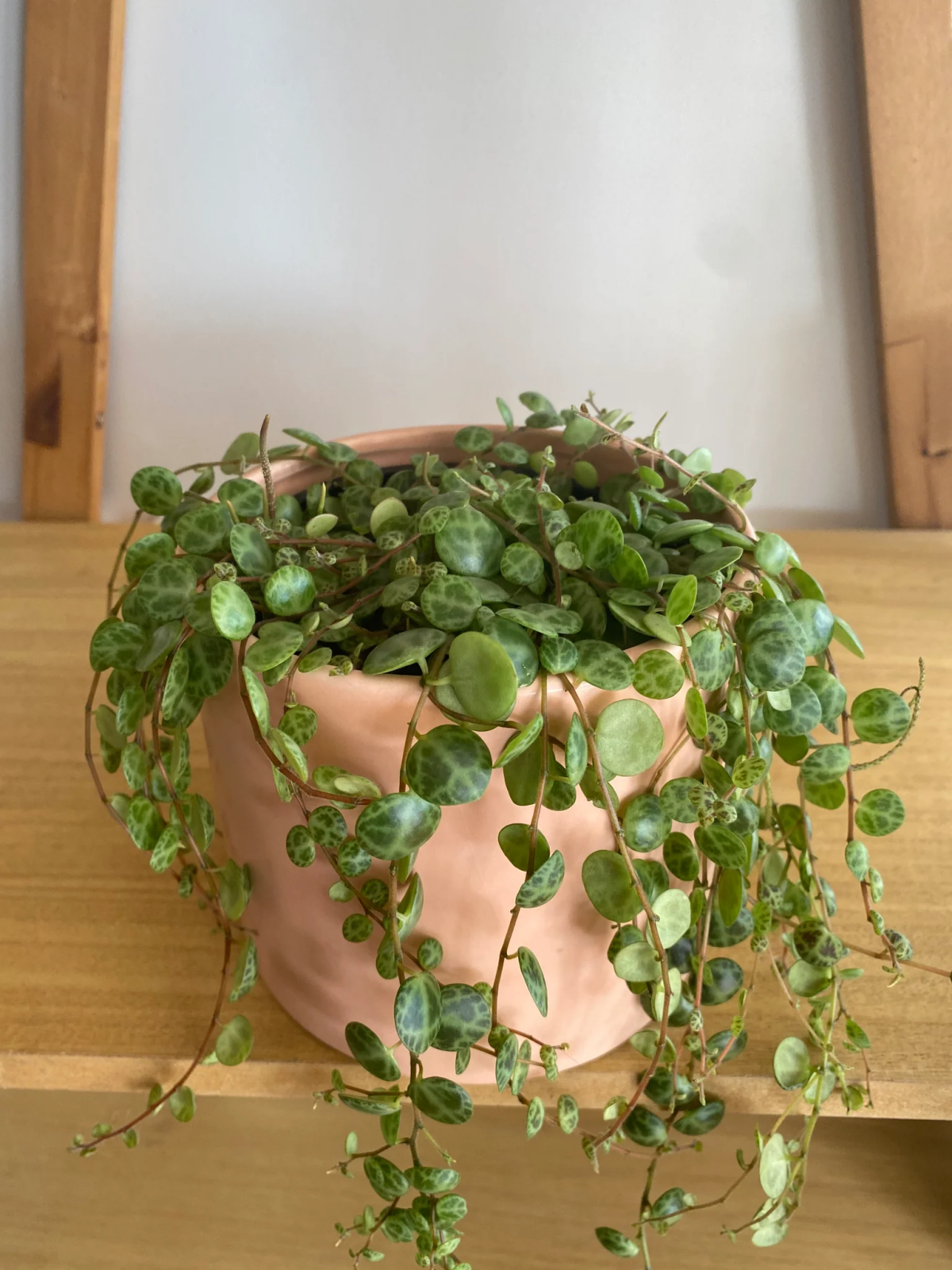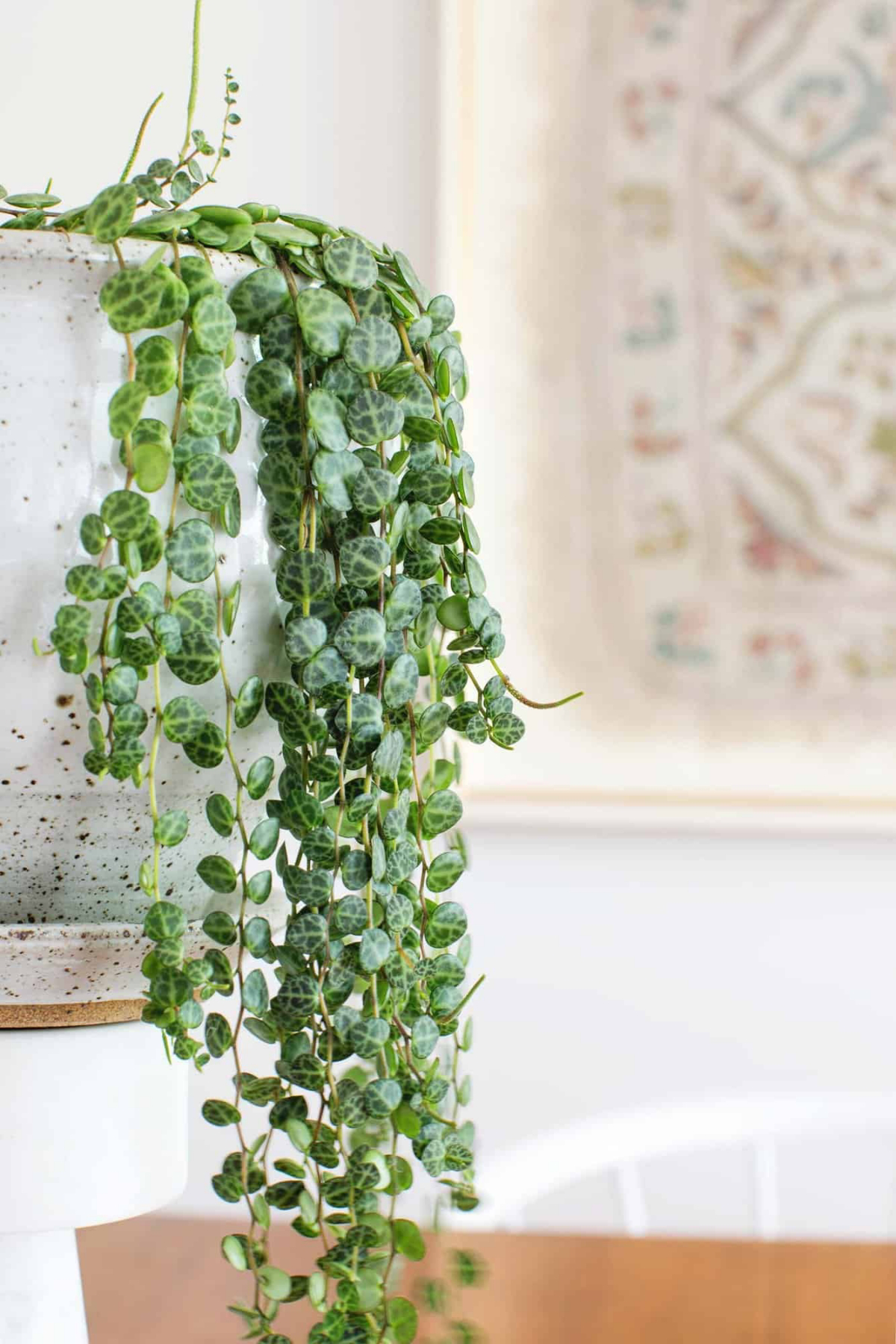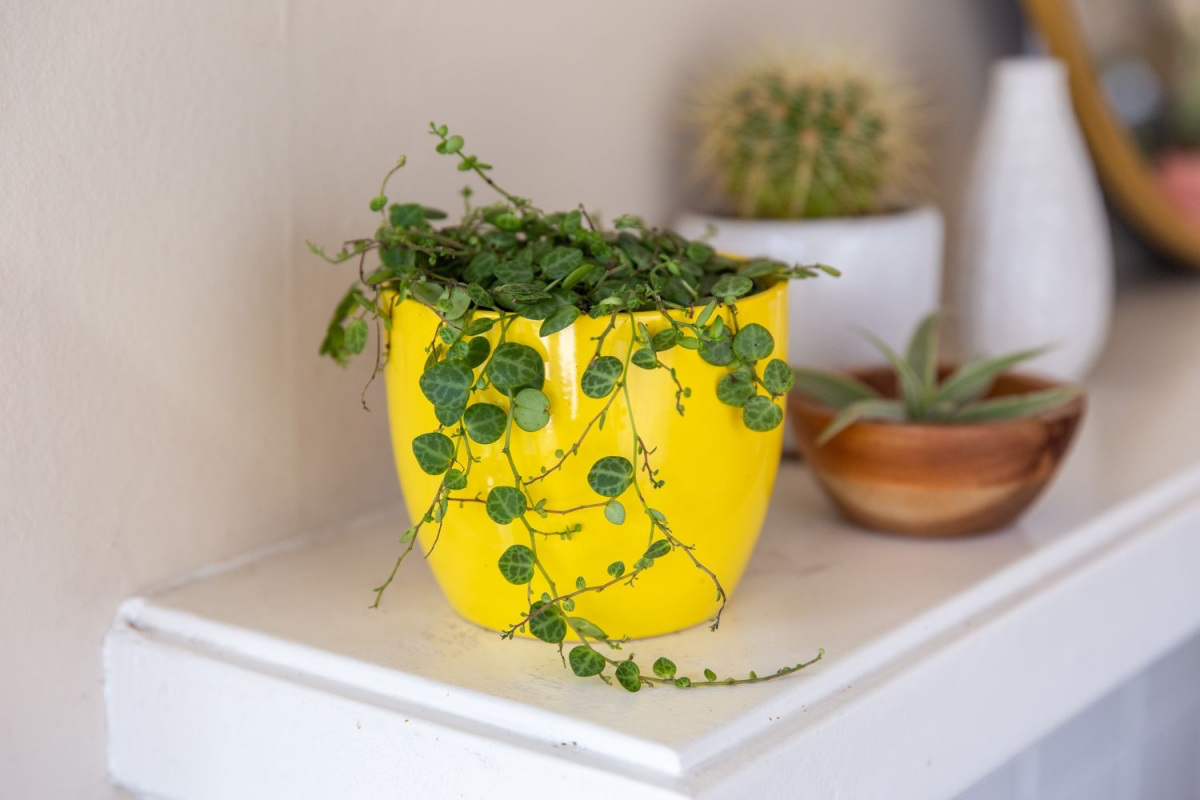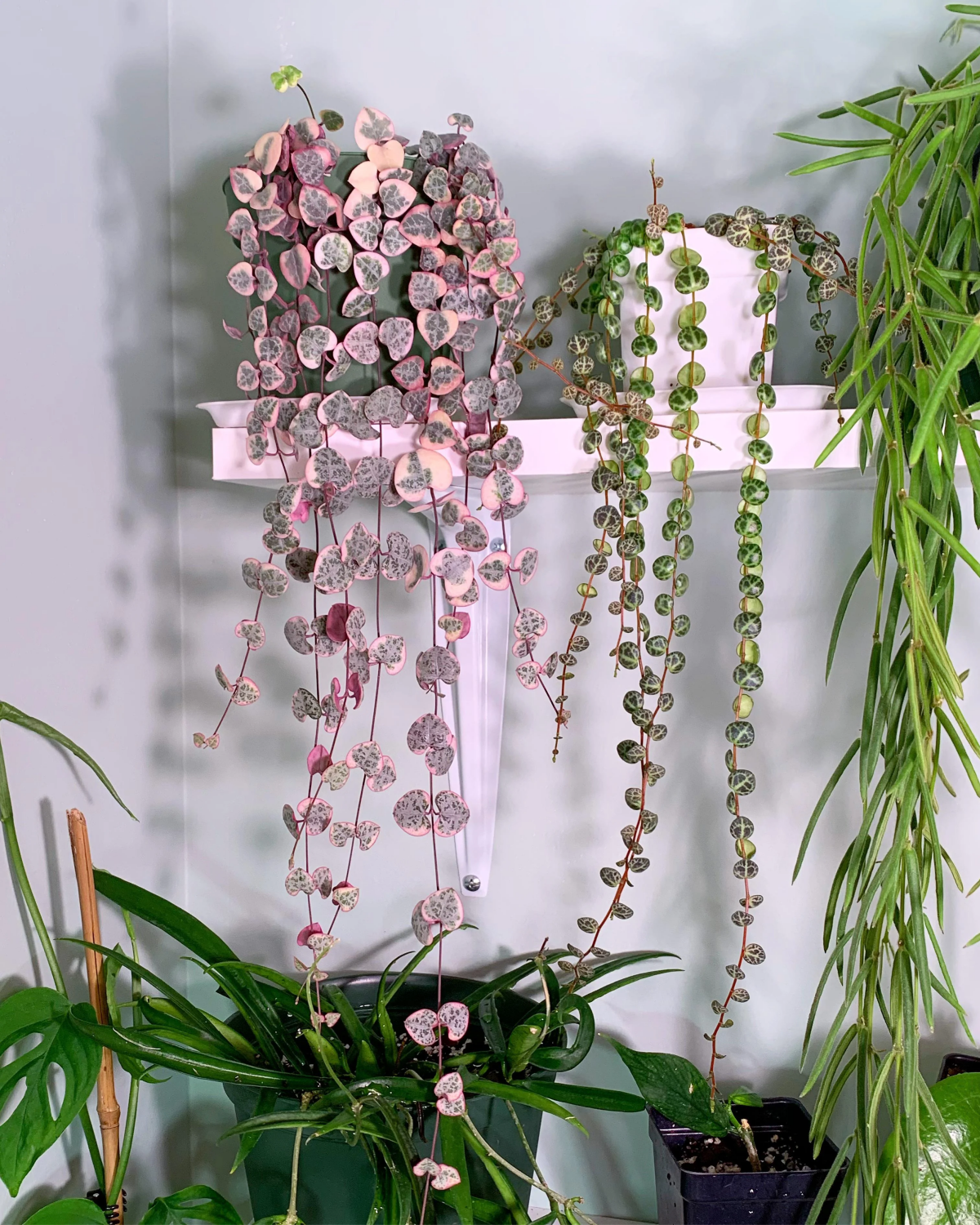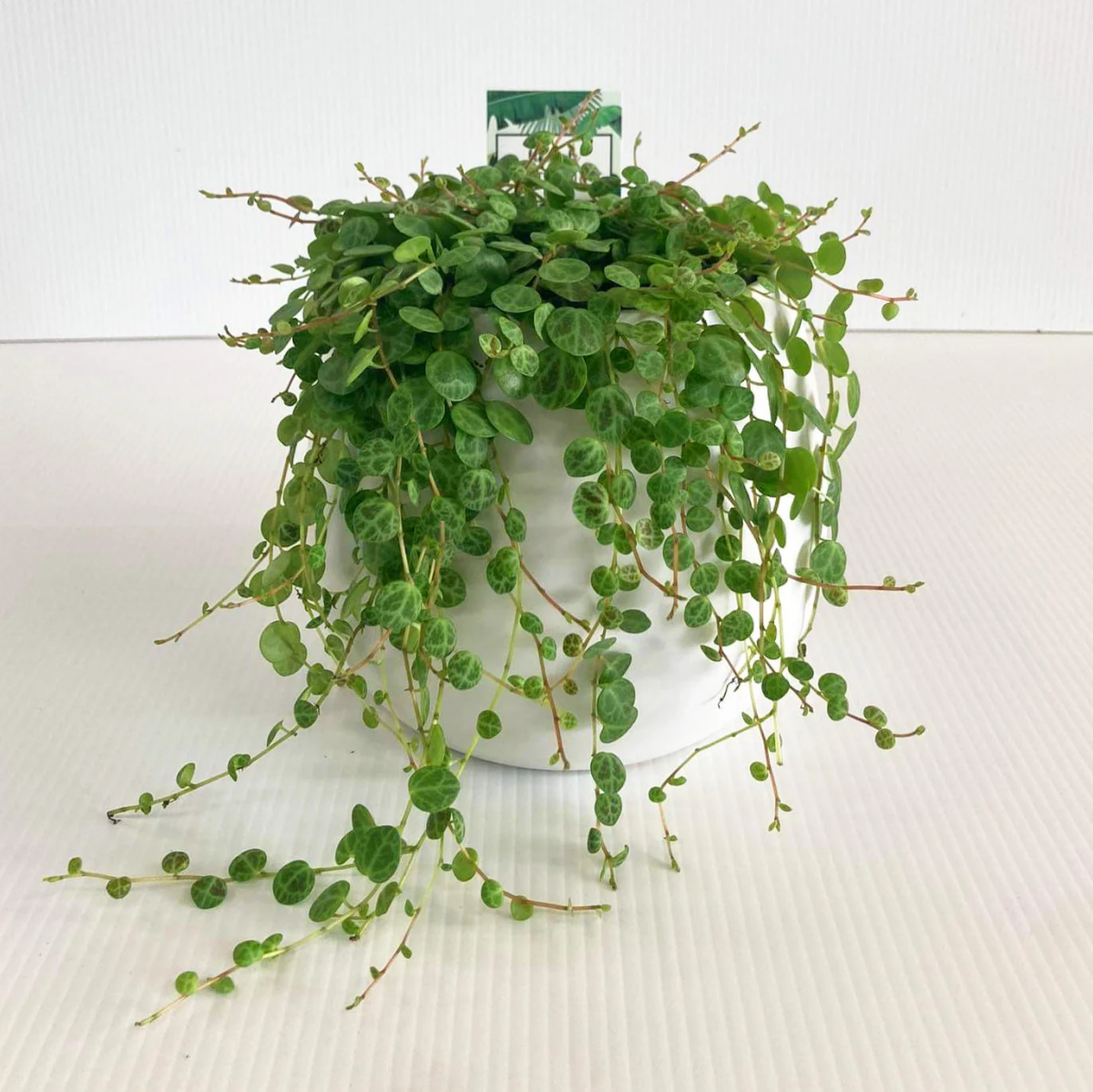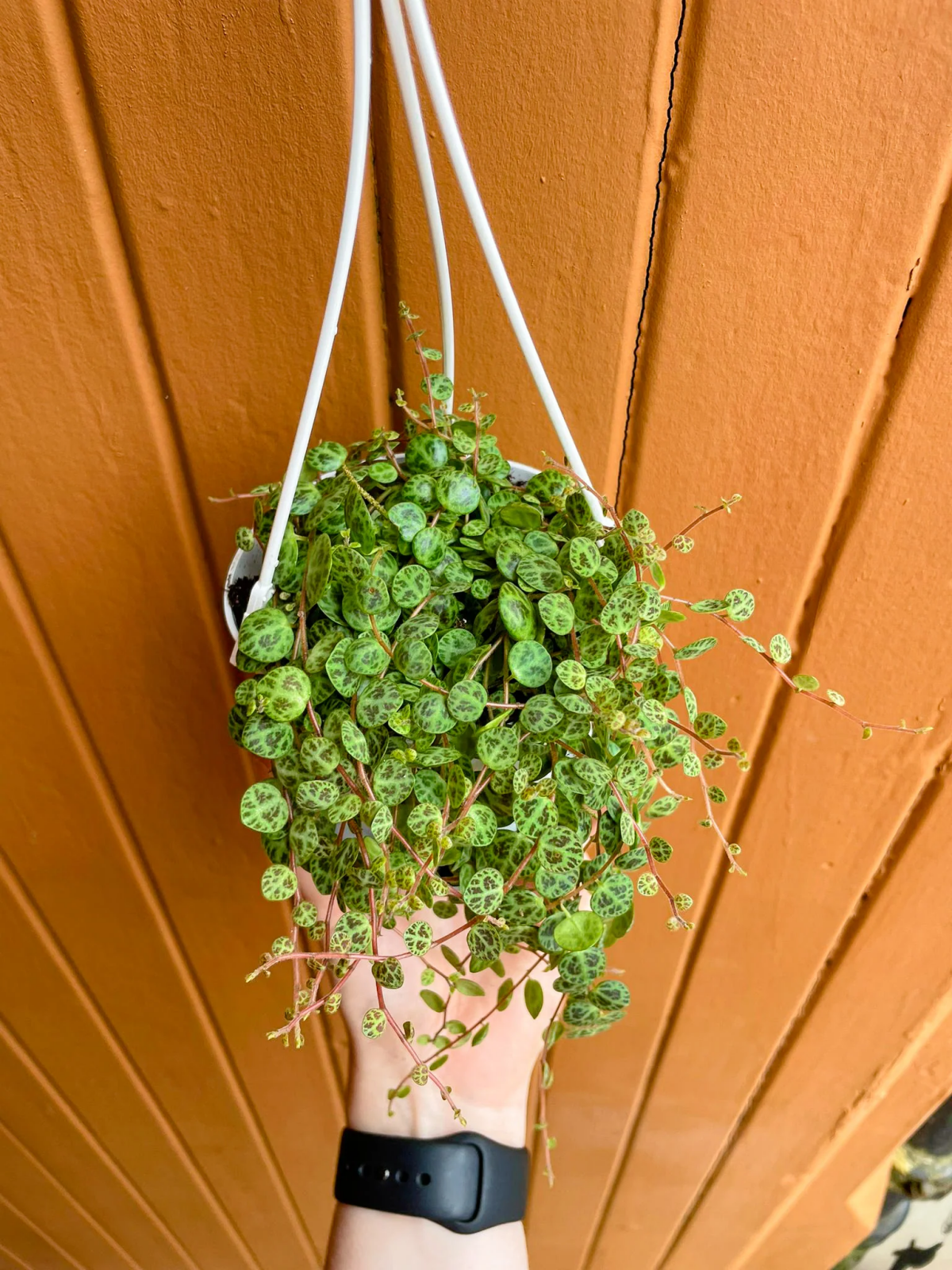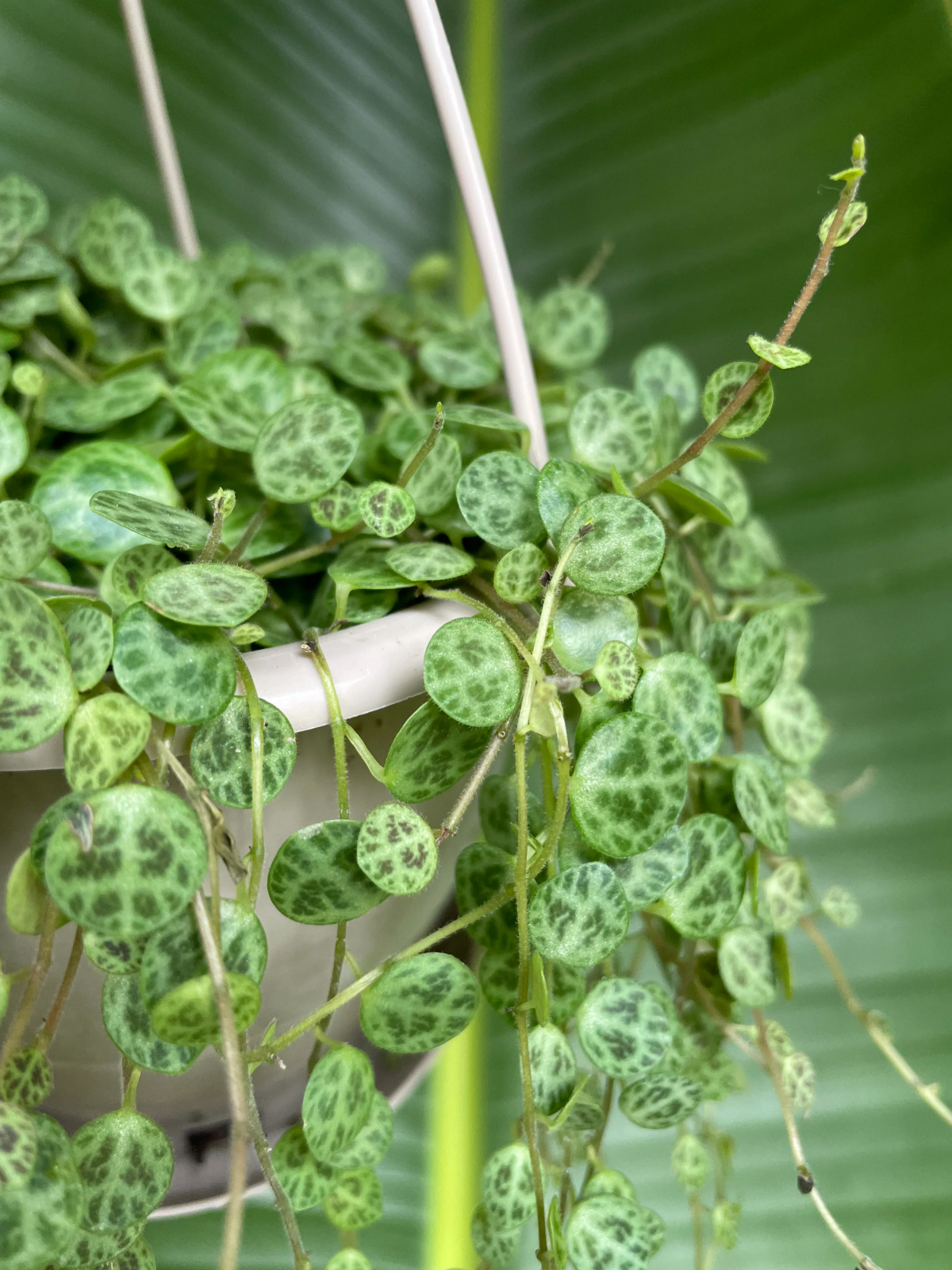String of Turtles Plant Care Guide: Light, Watering, Benefits & More
Welcome to the enchanting world of houseplants, where the air is crisper, the ambiance cozier, and the aesthetics infinitely more captivating. Today, we embark on a delightful journey to uncover the hidden treasures of the botanical realm. Our spotlight is on the exquisite String of Turtles plant, a name that hints at both its charm and resilience. In this comprehensive guide, we will explore every facet of caring for this natural wonder, from its intriguing appearance to the nurturing rituals that will make it thrive. Whether you’re a seasoned green thumb or a novice in the world of plants, there’s something magical about adding the String of Turtles to your collection. So, let’s embark on this green adventure together, shall we?
Let’s dive into the world of the String of Turtles plant
In this article
- Getting Acquainted with the String of Turtles Plant
- The Art of String of Turtles Plant Care
- The String of Turtles’ Green Gifts
- Who Should Get the String of Turtles Plant?
- Who Should Avoid It and Why?
- String of Turtles Plant: Challenges and Considerations
- Conclusion: Embracing Greenery with the String of Turtles
- More Articles You Might Like
Getting Acquainted with the String of Turtles Plant
Before we dive into the art of caring for your String of Turtles plant, let’s take a moment to admire its unique and captivating characteristics:
- Botanical Elegance: Aptly named, the String of Turtles plant (Peperomia Prostrata) showcases small, turtle-like leaves arranged on cascading vines. Its mesmerizing appearance adds an artistic touch to any space.
- Low-Maintenance Marvel: This resilient plant is known for its forgiving nature, making it an ideal choice for both beginners and experienced plant enthusiasts. Its minimal care requirements make it a delightful addition to your indoor garden.
- Natural Air Purifier: Like many houseplants, the String of Turtles actively contributes to cleaner indoor air by absorbing toxins and releasing oxygen. It’s a breath of fresh air in every sense.
This resilient plant is an ideal choice for both beginners and experienced plant enthusiasts
The Art of String of Turtles Plant Care
Caring for your String of Turtles plant is akin to tending to a precious work of art. Like a skilled artist, you must approach this task with a delicate touch, keen observation, and a deep appreciation for the intricacies of nature. In the following sections, we will delve into the nuances of String of Turtles care, helping you master the art of nurturing this remarkable botanical gem.
Let’s master the art of nurturing this remarkable botanical gem
Light Requirements
The first brushstroke in your String of Turtles care masterpiece involves providing the right amount of light. These plants thrive in bright, indirect sunlight. Placing them near a window that filters sunlight is ideal, as it prevents the risk of their delicate leaves getting scorched. While they adore the sun, they also appreciate a touch of dappled shade to shield them from harsh rays.
Placing them near a window that filters sunlight is ideal
Watering Wisdom
Watering your String of Turtles is where your artistry truly shines. As with many succulents, the cardinal rule here is to avoid overwatering. The soil should be allowed to dry out slightly between waterings. This means you should insert your metaphorical artist’s finger into the soil to check its moisture level. Ensure your pot possesses proper drainage to prevent waterlogging, which can be akin to an art disaster, potentially leading to dreaded root rot.
As with many succulents, the cardinal rule here is to avoid overwatering
Soil Selection
Think of the soil mix as your canvas. To paint the perfect picture of health for your String of Turtles, choose a well-draining potting mix. Adding ingredients such as perlite or sand enhances drainage, ensuring that the soil dries out relatively quickly after each watering. This provides the ideal foundation for your plant’s growth.
To support your String of Turtles plant, choose a well-draining potting mix
Temperature and Humidity
Just like a painting needs the right environment to retain its integrity, your String of Turtles thrives in specific temperature and humidity conditions. Maintain a comfortable indoor temperature between 65 °F to 75 °F (18 °C to 24 °C). To recreate the humid conditions of their native habitat, consider using a humidity tray or engaging in regular misting sessions. These thoughtful touches will keep your botanical masterpiece flourishing.
Consider using a humidity tray or engaging in regular misting sessions
Fertilizing Finesse
Every artist needs nourishment, and your String of Turtles is no different. Feed your plant with a balanced, diluted liquid fertilizer during its active growing season, which spans from spring to early autumn. A feeding every four to six weeks provides the nutrients it needs to flourish. However, as winter ushers in dormancy and growth naturally slows down, reduce or eliminate fertilization during this period.
Feed your plant with a balanced, diluted liquid fertilizer during its active growing season
With these brushstrokes of care, you’ll become a masterful caretaker of your String of Turtles. As you watch this living artwork thrive and flourish in your home, you’ll appreciate the beauty of nature’s masterpiece. Now, let’s explore the captivating benefits of having this stunning plant grace your living space.
The String of Turtles’ Green Gifts
Nature has a unique way of enhancing our lives, and the String of Turtles plant brings its distinct charm and advantages to your home:
- Aesthetic Delight: Its intricate foliage and cascading vines create an artistic focal point, transforming any room into a green paradise.
- Air-Purifying Pal: Alongside its beauty, the String of Turtles diligently filters the air, removing toxins and releasing oxygen, contributing to a healthier home environment.
- Stress Reliever: Caring for plants can be therapeutic, offering a sense of purpose and tranquility. Observing your String of Turtles’ growth and thriving can be a delightful stress-reliever.
- Versatile Decor: This plant’s trailing vines make it a versatile decor piece. Hang it in a decorative pot or let it cascade gracefully from a shelf for a chic and green touch.
With these advantages in mind, nurturing your String of Turtles becomes a rewarding experience, fostering not only a healthier home but also a deeper connection to nature.
The String of Turtles diligently filters the air, removing toxins and releasing oxygen
Who Should Get the String of Turtles Plant?
The String of Turtles plant is a delightful addition to any indoor plant collection, making it an excellent choice for a wide range of plant enthusiasts. Here’s a closer look at who would particularly enjoy having this charming succulent in their home:
- Plant Lovers of All Levels: Whether you’re a seasoned plant aficionado or just starting your green journey, the String of Turtles is an accommodating choice. Its relatively low maintenance requirements make it accessible to both beginners and experienced plant parents.
- Nature Enthusiasts with Limited Space: If you’re an urban dweller or simply have limited space for gardening, the String of Turtles is a space-saving marvel. Its compact size and trailing growth habit allow you to enjoy the beauty of nature even in confined living quarters.
- Aesthetes and Decor Enthusiasts: With its unique, turtle-like patterned leaves and delicate vines, this succulent doubles as a stylish piece of decor. It adds a touch of natural elegance to your interior design, making it an appealing choice for those who appreciate aesthetics.
With its unique, turtle-like patterned leaves, this succulent doubles as a stylish piece of decor
Who Should Avoid It and Why?
While the String of Turtles is a versatile and charming plant, there are certain situations and individuals who may want to exercise caution or avoid it altogether:
- Pet Owners with Curious Pets: If you have pets like cats or dogs known to nibble on plants, it’s essential to be cautious. Some succulents, including the String of Turtles, may be toxic to pets if ingested. In such cases, consider placing the plant in an area that’s inaccessible to your furry friends or opt for pet-safe alternatives.
- Busy Bees with Neglected Plant Habits: If you tend to forget your plant care duties or have a hectic schedule that leaves little time for plant maintenance, the String of Turtles may not be the best fit. While it’s relatively low-maintenance, it still requires regular attention to thrive.
- People with Plant Allergies: Although allergies to succulents like the String of Turtles are relatively rare, some individuals may have sensitivities. It’s advisable to handle the plant with care if you suspect any adverse reactions and seek medical advice if needed.
By considering these factors, you can determine whether the String of Turtles is the right plant companion for your lifestyle and preferences.
If you have pets like cats or dogs known to nibble on plants, it’s essential to be cautious
String of Turtles Plant: Challenges and Considerations
While the String of Turtles plant offers numerous benefits, it’s essential to be aware of potential challenges and considerations:
- Toxicity: The String of Turtles is not pet-friendly and should be placed out of reach of curious pets, as ingestion can lead to discomfort or mild toxicity.
- Limited Blooms: Unlike some flowering plants, the String of Turtles primarily shines through its foliage. If you’re seeking vibrant blooms, you may want to consider adding other flowering plants to your collection.
- Vigilant Watering: Overwatering is a common mistake with succulents like the String of Turtles. It’s crucial to strike the right balance to avoid root rot.
- Pruning: Periodic pruning may be necessary to maintain its shape and prevent overcrowding. This is a simple task that helps your plant stay healthy and visually appealing.
Overwatering is a common mistake with succulents like the String of Turtles
Conclusion: Embracing Greenery with the String of Turtles
In the delightful world of indoor plants, the String of Turtles stands out as a captivating and low-maintenance companion. Its unique appearance, air-purifying qualities, and versatility make it an excellent addition to any home. By following the care tips and considerations shared in this guide, you’ll embark on a green journey filled with aesthetic delight and the soothing benefits of nature. As you watch your String of Turtles thrive, you’ll not only enhance your living space but also cultivate a deeper connection to the green wonders of the botanical world. So, let your home flourish with the elegance of the String of Turtles and embrace the art of nurturing this remarkable plant. Happy gardening!
Now you know how to take care of a String of Turtles plant!



